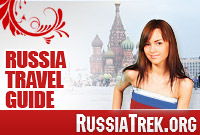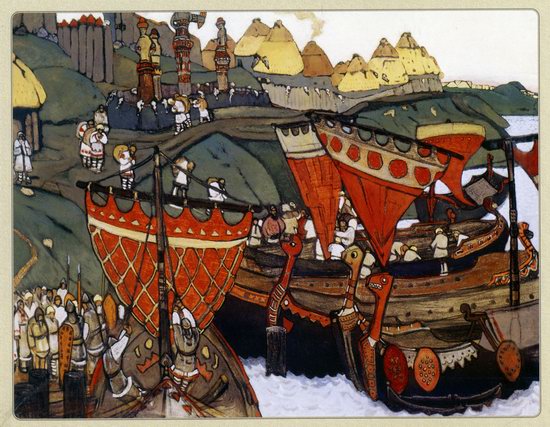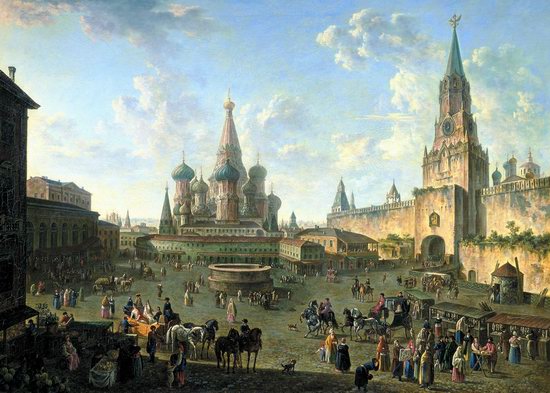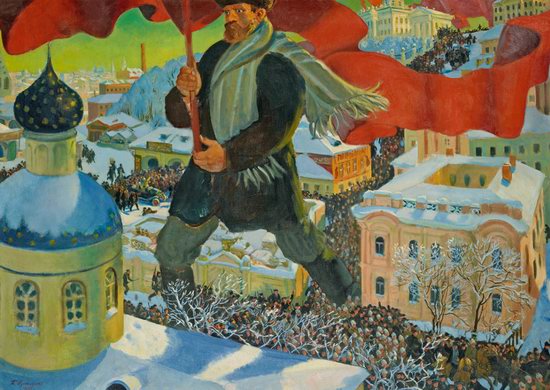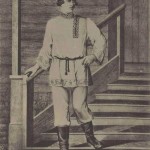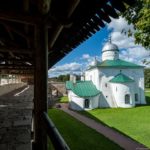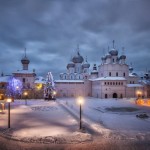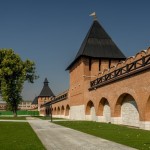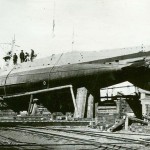A Storied Start
Russia is a large, ancient, and cultured country that has been a main player in the history of the world for a long time. The Russian Empire did not start as large and powerful as it is today. It all started with the Eastern Slavs, a group of loosely banded together groups. The Eastern Slavs became the first state of its kind in 882. The group grew even larger in 988 when it adopted Christianity from the Byzantine Empire.
The Byzantine Empire was a very influential and powerful civilization dating all the way back to 330 A.D. The empire was born when Emperor Constantine, a psychopathic politician, created a “New Rome” on an old Byzantine colony. While Rome itself would collapse before 500 A.D., the eastern half would continue on for another 1,000 years. This is how even ancient Rome influenced the rise of Russia.
Ancient Russians at Dnieper by Nicholas Roerich.
One End is Another’s Beginning
Kievan Rus’, the powerful Slavic state would eventually buckle and disintegrate during the Mongolian invasions that would devastate the landscape and the population of Kievan Rus’. The end of one country however, started the birth of another. Out of the ashes of Kievan Rus’ came Moscow, which quickly became a cultural center. By the 18th century, Russia stretched from Poland to the Pacific Ocean.
While the fierce battle campaign of the Mongol’s seemed like the beginning of the end for Russia, the fighting created a kind of unity in the surviving groups which solidified the country in a way not previously experienced. Back then news in Russia did not travel so quickly either, so the looming threat of another invasion created many peace treaties which would allow them to protect their borders. The resulting security allowed the nation to prosper like never before.
Red Square in Moscow by Fedor Alekseev.
Revolts and Their Results
One of the common hallmarks of the Russian Empire were peasant revolts. They happened many times, which forced a policy from Russia to be brutal and swift against an uprising. Russian serfdom was used for a time, but was widely ineffective because it caused so many revolts from unsatisfied peasants that wanted to own their own land.
Finally, the massive Russian Revolution occurred in 1917 when a war-weary populus that had less and less money, and increasing dissatisfaction of the ruling class caused an inevitable conflict. Initially the successful revolution allowed liberals and socialists to seize control of Russia, but their policies were ineffectual, allowing communism to take hold. This revolt of 1917 helped to cement the Russia most know of today.
Bolshevik by Boris Kustodiev.
Post-Soviet Russia
Before we got to the Russia of today, there was the Soviet Union, which lasted even though the second World War. In the 1980s however, many of the political and economic structures were weakening in the union, causing it to reach a critical breaking point.
As the Soviet Union collapsed, out of the ashes came a wiser, stronger, and more effective Russia. The Russian Federation began in January of 1992, and has been instrumental in establishing the Russia we now know.
Tags: No tags
You might also like:
<< Yekaterinburg – the view from above
